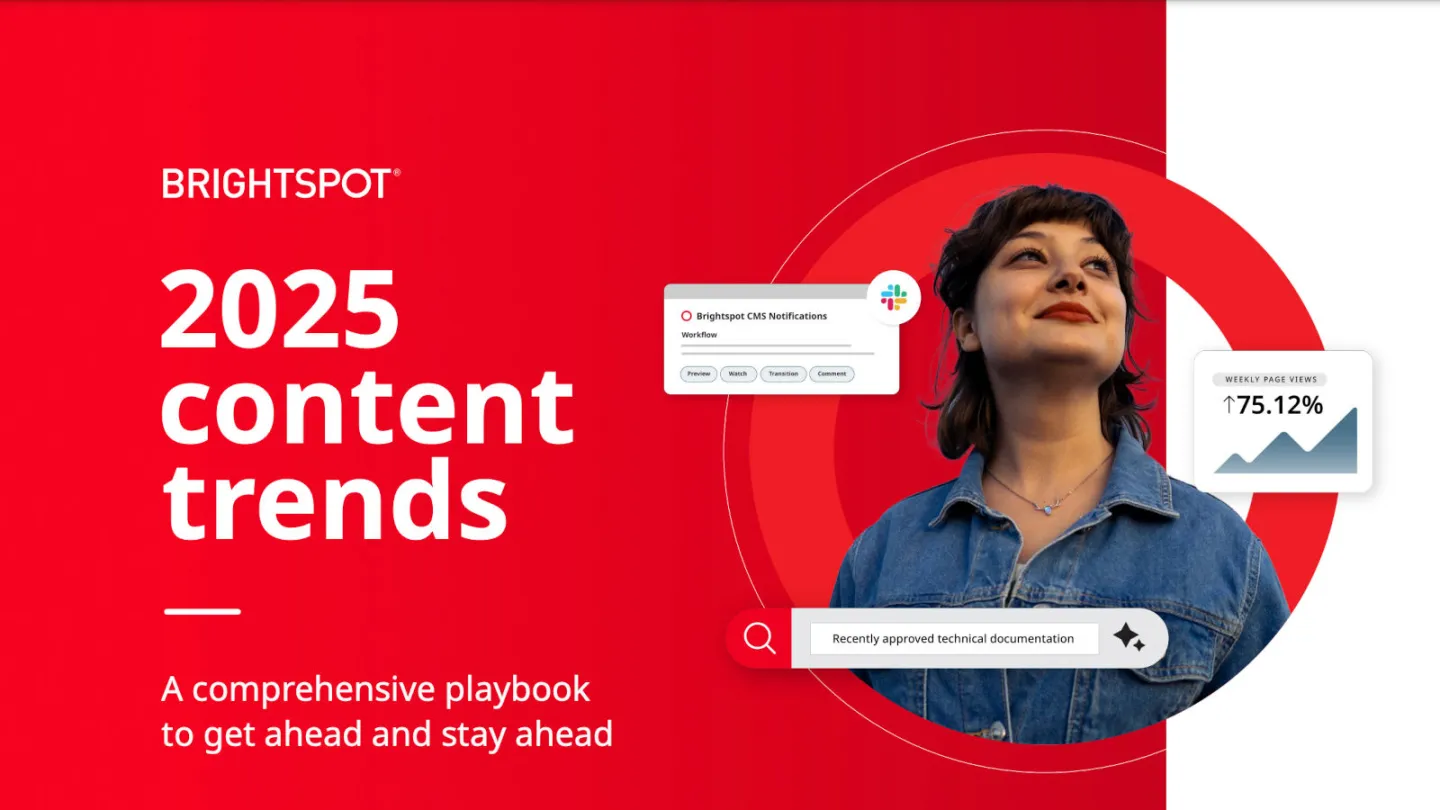
E-book: 2025 content trends
Discover the top content trends of 2025. Learn how to streamline workflows, leverage AI and collaborate smarter to stay ahead in the evolving digital landscape. Download the playbook now.
Building the content frontier: A comprehensive playbook to get ahead — and stay ahead
The content landscape is changing fast. In 2025, it’s not just about keeping up — it’s about leading the way. This e-book reveals the top trends and strategies you need to thrive, including:
- Doing more with less: Streamline processes with modular content, automation and AI.
- Using AI as a creative ally: Use AI to enhance creativity and deliver hyper-personalized experiences.
- Focusing on what matters: Free up time for strategy and storytelling by automating repetitive tasks.
- Collaborating smarter: Tools and processes to improve communication and speed up content delivery.
Packed with insights and real-world examples, this playbook will help you stay ahead of the curve and lead the content revolution in 2025.
Download your free copy today!
To learn more about our content management solutions and how Brightspot can support your digital strategy, connect with one of our experts today.
Explore more reports & research
Brightspot is named a Representative Vendor in the April 2024 Gartner Market Guide for Web Content Management. Read the report here.
Aragon Research positions Brightspot in the “Leader” section of the Globe for Content Experience Platforms. Read the report here.
Explore how a leading defense intelligence and analysis firm used Brightspot’s content management solutions to significantly overhaul its long-standing research publishing business.
